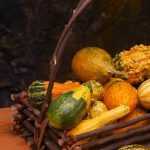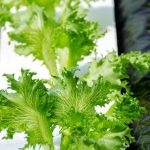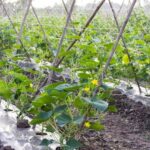Are you looking to start a tropical vegetable garden in Australia? Look no further. In this article, we will explore the exciting world of tropical vegetable gardening in Australia. From choosing the right location for your garden to soil preparation, pest management, and harvesting tips, we’ve got you covered. Whether you’re a seasoned gardener or just starting out, there’s something here for everyone interested in tropical vegetable gardening in Australia.
Tropical vegetable gardening in Australia offers its own unique set of challenges and rewards. With the right knowledge and techniques, you can cultivate a bountiful harvest of delicious and nutritious vegetables year-round. From the humid climate of northern Queensland to the milder tropics of Western Australia, there are plenty of opportunities to grow a wide variety of vegetables in the tropical regions of Australia.
In this comprehensive guide, we will discuss everything from choosing the best vegetables to grow in a tropical climate to successful soil preparation, pest management, watering and irrigation techniques, as well as tips for harvesting and storing your tropical produce. Whether you’re a city-dweller with a small balcony or an acreage owner with plenty of space to spare, there is always something new to learn when it comes to tropical vegetable gardening in Australia.
Read on to discover all that this exciting gardening method has to offer.
Choosing the Right Location for Your Tropical Vegetable Garden
When it comes to tropical vegetable gardening in Australia, choosing the right location for your garden is crucial for the success of your produce. The ideal location for a tropical vegetable garden is one that receives ample sunlight but also has some form of protection from harsh midday sun, especially during the peak of summer. Additionally, the chosen spot should have good air circulation to prevent moisture-related diseases and promote healthy plant growth.
In Australia, coastal areas with a tropical climate are perfect for growing vegetables such as tomatoes, eggplants, peppers, and cucumbers. These plants thrive in warm temperatures and require plenty of sunlight to produce a bountiful harvest. When selecting a location for your tropical vegetable garden, consider areas that are not prone to strong winds or frost, as these conditions can damage or inhibit the growth of your crops.
It’s important to assess the space you have available for your garden and choose a location with well-draining soil. Avoid low-lying areas that may become waterlogged during heavy rains. Prioritize areas with fertile soil rich in organic matter to provide essential nutrients for your tropical vegetables. By carefully selecting the right location for your tropical vegetable garden, you can set yourself up for a successful and rewarding gardening experience in Australia’s tropical climates.
Best Vegetables to Grow in a Tropical Climate in Australia
When it comes to tropical vegetable gardening in Australia, the climate presents both opportunities and challenges for growing a wide variety of vegetables. The hot and humid conditions in tropical regions are ideal for certain vegetables that thrive in these climates. Whether you’re a beginner or experienced gardener, choosing the right vegetables to grow is essential for a successful harvest.
Here are some of the best vegetables to grow in a tropical climate in Australia:
- Tomatoes: Tomatoes are a staple in many Australian gardens and they love the warmth of tropical climates. They can be grown year-round in northern parts of Australia.
- Chilies: Chilies thrive in hot and sunny conditions, making them perfect for tropical vegetable gardening. There are many varieties to choose from, each with its own level of heat.
- Okra: Also known as lady’s fingers, okra is well-suited to tropical climates and can produce an abundant harvest during the warm months.
- Eggplant: With proper care and sun exposure, eggplants can flourish in tropical regions and produce an abundance of fruit.
In addition to these vegetables, other suitable options include sweet potatoes, cucumbers, and various leafy greens such as spinach, kale, and Asian greens. These vegetables can handle the heat and humidity of tropical regions while providing a bountiful yield for your garden.
It’s important to select vegetable varieties that are well-adapted to the specific conditions of your local area within Australia’s tropical regions. By choosing the right vegetables for your climate, you’ll be set up for success in your tropical vegetable gardening endeavors.
Soil Preparation and Fertilization for Tropical Vegetable Gardens
When it comes to tropical vegetable gardening in Australia, soil preparation and fertilization are crucial steps for a successful harvest. The first step is to test the soil to determine its pH level and nutrient content. Most tropical vegetables thrive in slightly acidic soil with a pH range of 6.0 to 6.8. If the soil is too acidic or alkaline, amendments such as lime or sulfur may be necessary to adjust the pH level accordingly.
In addition to pH levels, tropical vegetable gardens require fertile, well-draining soil that is rich in organic matter. Home gardeners can improve their soil structure by incorporating compost, aged manure, or other organic materials into the ground. This not only provides essential nutrients for plant growth but also encourages beneficial microbial activity in the soil.
Furthermore, regular fertilization is key to supporting the vigorous growth and high yields of tropical vegetables. Organic fertilizers such as compost, fish emulsion, and seaweed extract are popular choices among gardeners practicing sustainable agriculture. These natural fertilizers not only provide a slow release of nutrients but also help maintain the overall health of the soil ecosystem.
It’s important for Australian gardeners embarking on tropical vegetable gardening to understand that different vegetables have varying fertilizer needs throughout their growth stages. Be sure to read the guidelines specific to each crop and adjust your fertilizer application accordingly.
| Soil Preparation | Fertilization |
|---|---|
| Determine pH level and nutrient content | Regular application of organic fertilizers |
| Incorporate organic matter into the soil | Adjust fertilizer application based on specific crop needs |
Pest and Disease Management for Tropical Vegetable Gardening in Australia
When embarking on tropical vegetable gardening in Australia, it’s important to be aware of the potential pests and diseases that can affect your crops. Here are some tips for managing these challenges:
1. Identify common pests and diseases: In a tropical climate, common pests such as aphids, caterpillars, and mites can wreak havoc on your vegetable garden. Diseases such as powdery mildew and bacterial wilt can also pose a threat. Familiarize yourself with the signs of these pests and diseases so you can take action early.
2. Implement integrated pest management (IPM) strategies: Instead of relying solely on chemical pesticides, consider adopting an IPM approach. This may involve using natural predators to control pest populations, practicing crop rotation to reduce disease pressure, and maintaining overall garden hygiene to prevent infestations.
3. Use organic remedies when possible: Given the potential impact of chemical pesticides on the environment and human health, consider using organic solutions whenever feasible. For example, neem oil can be effective against a variety of pests, while copper-based fungicides are commonly used to combat fungal diseases in tropical vegetable gardens.
By being proactive about pest and disease management in your tropical vegetable garden in Australia, you can increase the likelihood of a successful harvest while minimizing the need for harsh chemicals that may harm the ecosystem.
Remember to stay vigilant throughout the growing season, regularly inspecting your plants for signs of trouble and taking prompt action to address any issues that arise. With proper care and attention, you can enjoy a bountiful tropical vegetable garden in Australia.
The Importance of Watering and Irrigation in Tropical Vegetable Gardens
Watering and irrigation are crucial components of successful tropical vegetable gardening in Australia. With the hot and humid climate that characterizes tropical regions in the country, ensuring that your vegetable garden receives adequate water is essential for the healthy growth of plants. In tropical areas such as Queensland, Northern Territory, and parts of Western Australia, the average annual rainfall may not always be sufficient to sustain a thriving vegetable garden, making a reliable watering and irrigation system a necessity.
When it comes to watering tropical vegetables in Australia, it is important to understand the specific needs of different plant varieties. Some vegetables, like tomatoes and cucumbers, thrive with consistent moisture levels, while others, such as yams and taro root, can tolerate short periods of dryness. Additionally, proper irrigation techniques can help prevent common issues such as leaf diseases that are prevalent in humid conditions.
One effective strategy for watering and irrigation in tropical vegetable gardens is the use of drip irrigation systems. These systems deliver water directly to the base of plants’ stems, reducing water waste from evaporation and minimizing the risk of fungal diseases that can result from overhead watering. In addition to efficient water delivery, mulching around vegetable plants can also help retain soil moisture and regulate temperature-a crucial factor for successful gardening in Australia’s tropical climate.
| Vegetable | Optimal Watering Requirements |
|---|---|
| Tomatoes | Consistent moisture; avoid overwatering to prevent root rot |
| Cucumbers | Regular watering during hot weather; maintain even soil moisture levels |
| Yams/Taro Root | Tolerant to short periods of dryness; avoid waterlogging the soil |
Implementing these best practices for watering and irrigation will contribute significantly to the success of your tropical vegetable garden in Australia. By understanding the unique watering needs of different vegetables, utilizing efficient irrigation systems, and employing mulching techniques, you can ensure that your plants receive adequate moisture for optimal growth amidst Australia’s tropical climate.
Tips for Harvesting and Storing Tropical Vegetables in Australia
Proper Harvesting Techniques
When it comes to harvesting tropical vegetables in Australia, timing is crucial. Different vegetables have different maturity periods, so it’s essential to familiarize yourself with the recommended harvest time for each crop. For example, eggplants should be harvested when they are still glossy and firm, while pumpkins should be left on the vine until their skin hardens. Additionally, using sharp garden shears or a knife can help prevent damage to the plants during harvesting.
Effective Storage Methods
After a successful harvest, proper storage becomes important to prolong the shelf life of your tropical vegetables. Some vegetables, such as tomatoes and cucumbers, are best kept at room temperature to maintain their flavor and texture. Others like leafy greens and root crops benefit from being stored in the refrigerator to slow down decay. Investing in breathable storage containers or bags can also help regulate humidity levels and prevent mold growth.
Maximizing Shelf Life
To ensure that you get the most out of your tropical vegetable harvest, it’s essential to prioritize the consumption of perishable items first. Vegetables like lettuce and herbs have shorter shelf lives compared to root vegetables and squashes. Additionally, implementing proper rotation techniques (first in, first out) can help minimize food wastage and ensure that none of your hard-earned produce goes bad before you have a chance to enjoy it.
By following these tips for harvesting and storing tropical vegetables in Australia, you can maximize the rewards of your gardening efforts and enjoy a bountiful supply of fresh produce throughout the year.
Success Stories and Tips From Experienced Tropical Vegetable Gardeners in Australia
Experienced gardeners in Australia have a wealth of knowledge to share when it comes to successful tropical vegetable gardening. With the unique climate and soil conditions in Australia, learning from those with experience can provide valuable insights for those looking to start or improve their own tropical vegetable gardens.
Overcoming Challenges
One common theme among experienced tropical vegetable gardeners in Australia is the need to overcome challenges specific to the region. From dealing with extreme heat and humidity to managing pests and diseases that thrive in tropical climates, these gardeners have learned valuable techniques for keeping their plants healthy and productive. By sharing their stories of overcoming these challenges, new gardeners can gain confidence in facing similar issues and learn effective strategies for success.
Adapting Techniques
Experienced tropical vegetable gardeners in Australia often emphasize the importance of adapting traditional gardening techniques to suit the unique needs of a tropical climate. This may involve adjusting planting schedules, utilizing shade structures, or implementing specialized irrigation methods to ensure optimal growing conditions for vegetables. By learning from these seasoned gardeners, newcomers can gain practical advice on how to adapt their gardening practices for success in a tropical environment.
Community Support
Many experienced tropical vegetable gardeners in Australia also highlight the importance of community support and shared knowledge. Whether through local gardening groups, online forums, or workshops, these individuals have found value in exchanging ideas and tips with fellow gardeners facing similar challenges. By engaging with the gardening community and tapping into the experiences of others, new gardeners can access a wealth of information and support to help them navigate the nuances of tropical vegetable gardening in Australia.
By seeking out success stories and tips from experienced tropical vegetable gardeners in Australia, both novice and seasoned gardeners can benefit from shared knowledge, practical advice, and inspiration for cultivating thriving vegetable gardens in a tropical climate.
Conclusion
In conclusion, tropical vegetable gardening in Australia presents both challenges and rewards for gardeners. The unique climate and environmental factors in the region require careful consideration and planning when it comes to selecting the right location, choosing suitable vegetables, preparing the soil, managing pests and diseases, ensuring proper irrigation, and harvesting and storing the produce. However, despite these challenges, many experienced tropical vegetable gardeners in Australia have achieved success and reaped the rewards of their efforts.
Embracing the challenges of tropical vegetable gardening in Australia can lead to a bountiful harvest of fresh, nutritious produce that thrives in the region’s warm and humid climate. By carefully selecting the right location with ample sunlight and well-draining soil, gardeners can create an ideal environment for their tropical vegetable garden. Additionally, implementing proper soil preparation and fertilization techniques, along with effective pest and disease management strategies, is crucial for ensuring healthy plant growth and abundant yields.
Furthermore, successful tropical vegetable gardeners in Australia emphasize the importance of regular watering and irrigation to maintain optimal growing conditions for their plants. By staying vigilant in monitoring moisture levels and providing sufficient water to their gardens, they can promote strong root development and prevent stress-related issues that may arise from inadequately hydrated plants.
Ultimately, embracing the challenges of tropical vegetable gardening in Australia is not only a rewarding experience but also an opportunity to cultivate a thriving garden filled with an array of delicious vegetables suited to the region’s unique climate.
Frequently Asked Questions
What Vegetables Grow Well in Tropical Climates?
Vegetables that grow well in tropical climates include okra, sweet potatoes, eggplant, tomatoes, and peppers. These plants thrive in the warm temperatures and high humidity typically found in tropical regions.
What Is the Best Climate in Australia for Growing Vegetables?
The best climate in Australia for growing vegetables is generally found in the southern parts of the country, particularly in areas with a temperate climate. Places like Tasmania and southern Victoria have the right conditions for a wide variety of vegetables to flourish.
What Vegetables Grow All Year Round in Australia?
In Australia, some vegetables that can grow all year round include spinach, silverbeet, carrots, lettuce, and radishes. These cool-season crops are able to tolerate mild winter temperatures and can continue to produce throughout the year with proper care and attention.

If you’re looking to get into vegetable gardening, or are just looking for some tips on how to make your current garden better, then you’ve come to the right place! My name is Ethel and I have been gardening for years. In this blog, I’m going to share with you some of my best tips on how to create a successful vegetable garden.





